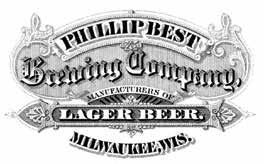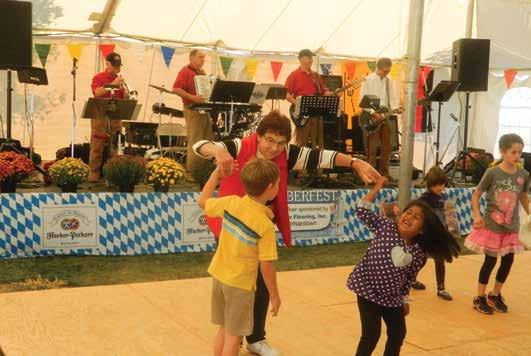
2 minute read
When Beer Came to Milwaukee
WHEN BEER CAME TO MILWAUKEE By Matthew J. Prigge
It’s hard to believe, but there was actually a time when Milwaukee existed without beer. We’re not talking about Prohibition (check an old city directory from the “booze-less” years and you’ll find hundreds of listings for “soft drink parlors”), but rather the earliest years of European settlement in the area. With no nearby breweries and no method for cold-storage shipping, Beertown was startlingly beerless. Milwaukee’s first German residents tried to get by without a proper brewery by mixing whiskey with vinegar and sprinkling a bit of limestone on top to give it a “head.” The first barrels of real beer arrived in the area in September 1835 to celebrate the village’s first election day. Sadly, the three kegs, shipped from Buffalo, had spoiled by the time they reached the city.
The ink had barely dried on Milwaukee’s mark on the national map, by 1840, when the area’s first commercial brewery opened up at Clybourn Street on the lakefront. The Lake Brewery started out with a copper-lined box that fit five barrels, making ale and lager that would be shipped as far away as Chicago.
Brewing remained a mom-and-pop industry in Milwaukee over the next couple of decades, but one that nonetheless experienced enormous growth as German immigrants began to pour into the city. In the mid-1850s, as many of the future titans of Milwaukee brewing were fleeing Germany, there were more than 25 breweries operating in the city. Founded in 1854, the C. T. Melms Brewery had grown into the city’s largest by 1860, and Melms would gain national recognition as one of the first of Milwaukee’s “beer barons.”


Enter Phillip Best
In 1859, the city’s Empire Brewery was rechristened as the Phillip Best Brewing Company. Best would take over the spot of Milwaukee’s top brewer by the late 1860s and would claim the title of the nation’s largest in 1874. After more than decade of recognition as one of America's brewing capitals, Milwaukee and beer had become synonymous in the national eye by the time Pabst claimed its crown. This coincided with a great consolidation in the local beer business, as the largest operators—those most capable of shipping their product nationally—began to dominate the market. By 1885, the number of city breweries had fallen to just nine, but that group included many of the brands—Best (who would become Pabst), Blatz, Miller, Schlitz—that remain nationally known to this day.
Although there was only one year (1890) in which the U.S. Census Bureau listed beer as the city’s most valuable export, by the 1880s, beer was—and would forever be— the product most closely associated with Milwaukee. Penny postcards, mailed home by travelers and conventioneers, highlighted the city’s breweries and beer gardens. Baseball teams—five in total—would wear the Milwaukee Brewers moniker. In 1893, Schlitz debuted their “The Beer That Made Milwaukee Famous” slogan, which is still used today.
Matthew J. Prigge is the author of Milwaukee Mayhem: Murder and Mystery in the Cream City’s First Century.










